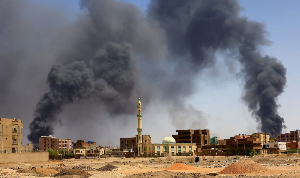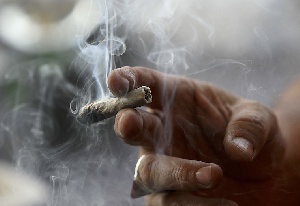A GNA feature by Gifty Osei-Ampadu
Accra, June 22, GNA - Zenobia, 11, woke up with chills, high temperature, headache and general body aches. Crying, she went to her mother, 93Mummy today I can't go to school, my head, my nose is running,= I am hot=85." She tries to explain to her mother.
Auntie Jane, surprised at her daughter's attitude, attempted to hold her but realised that her daughter was too warm for normal temperature so decided immediately to send her to the family doctor. At the hospital the doctor diagnosed the illness to be malaria, a tropical disease.
Malaria is a potentially fatal blood disease caused by a parasite that is transmitted to human and animal hosts by the anopheles mosquito. The human parasite, which is plasmodium falciparum, is dangerous not onl= y because it digests the red blood cells, haemoglobin, but also changes the adhesive properties of the cells it inhabits. It becomes dangerous when the infected blood cells stick to the capillaries of the brain, obstructing blood flow, a condition called cerebral malaria.
According to the Ghana Statistical Service each year, about 3,000 to 5,000 cases of suspected malaria are reported nationwide which leads to the death of 1,500 children daily.
It is also estimated that young children and pregnant women are at the highest risk of malaria and mortality Today, only two percent of children nationwide sleep under bed nets treated with insecticide. This means that malaria has a direct effect on th= e productivity and family lives of people, in that, for years, Ghanaians have been tortured by this deadly disease.
Malaria, like any other sickness, has its related symptoms; these are signals or indicators that one may experience or see when attacked by malaria. These symptoms may include high fever, weakness in the joints, bitterness in the mouth, sweating and these are often associated with fatigues, headaches and dizziness.
Some patients may develop nauseating feeling, vomiting, cough and perhaps diarrhoea which is due to destruction of red blood cell. With the case of Ghana, the above statistics shows that lots of lives of children and adults of tomorrow are lost. Over 547,500 lives of children in a year are 91swept off' due to malaria.
These children who are expected to take over the future are always wasted away by malaria.
Unfortunately, the issue of malaria is trivialized by leaders and stakeholders as they consider it one of the other sicknesses. This has made malaria more complicated to tackle.
This does not mean that the government is not putting in any effort to fight the disease but most of its efforts are directed towards malaria treatment than prevention.
As the sayings goes, 93prevention is better than cure". Therefore, appeals have been made to the government and stake holders to redirect thei= r attention towards allocating funds for preventing malaria. In addition to malaria being deadly, it can affect a large percentage o= f the population and prevent them from carrying out their daily activities both at home and at work.
In suggesting ways of prevention, state institutions responsible for handling the problem of malaria should increase malaria education and sensitization of the public on keeping their environment clean. This can be done by undertaking clean-up exercises at least twice a week and also emphasize the importance of sleeping in a bed net treated wit= h insecticide.
In solving the problem of malaria, it is important for people to keep a clean environment by clearing gutters and most importantly sleep under treated mosquito nets. However, anytime one feels bitterness in the mouth, weakness in the joints or feeling feverish, one must 91run' to a nearby hospital because= they might be the symptoms of malaria. Researchers have identified Artesunate Amodiaquine and Lumifantrine Artemeter, both with the green leaves as the best drugs for the treatment o= f malaria.
Health News of Wednesday, 22 June 2011
Source: GNA












